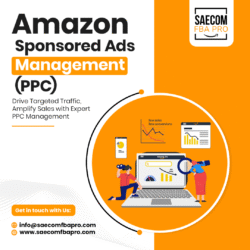In a rapidly evolving business landscape where automation and data accuracy are key to success, traditional payroll management methods are no longer sufficient. Manual calculations, paper payslips, and spreadsheet-based systems not only consume time but also increase the risk of errors and compliance issues. Enter payslip data digitization — a revolutionary advancement that’s reshaping how organizations manage payroll.
By adopting payslip digitization, businesses can automate repetitive processes, ensure precision, enhance transparency, and future-proof their payroll operations. Let’s explore why payslip data digitization represents the future of payroll management and how it can transform the way organizations operate.
What Is Payslip Data Digitization?
Payslip data digitization is the process of converting manual or paper-based payslip records into digital formats using advanced payroll software and automation tools. It allows companies to generate, manage, and distribute payslips electronically, ensuring every payroll operation — from salary computation to compliance reporting — is faster, more accurate, and more secure.
Rather than manually entering data, calculating deductions, and printing physical payslips, organizations can now leverage integrated systems that automatically process payroll based on real-time employee and tax data.
This digital transformation forms the backbone of modern payroll management, enabling HR and finance teams to focus on strategy instead of routine administrative work.
Why Traditional Payroll Methods Are Becoming Obsolete
Manual payroll systems have served businesses for decades, but in today’s digital age, they come with significant limitations. Some of the biggest challenges include:
- Human Errors: Manual data entry often leads to miscalculations, incorrect deductions, or duplicate entries.
- Compliance Risks: Keeping up with changing tax laws and labor regulations can be difficult without automated updates.
- Data Insecurity: Paper payslips and local spreadsheets are prone to loss, theft, or unauthorized access.
- Time-Consuming Processes: Generating and verifying each payslip manually slows down payroll cycles.
- Limited Accessibility: Employees have to rely on HR departments for payslip copies or salary clarifications.
These limitations make a strong case for embracing payslip data digitization, which addresses all these pain points while paving the way for a more efficient and secure payroll ecosystem.
How Payslip Data Digitization Transforms Payroll Management
1. Automation and Efficiency
With payslip data digitization, payroll processing becomes fully automated. Salaries, tax deductions, bonuses, and allowances are calculated based on pre-set rules. The system fetches employee data from HR databases, processes it in real time, and generates accurate payslips instantly.
This automation drastically reduces the processing time — what once took days can now be completed in hours or even minutes — giving HR and finance teams more time for strategic work.
2. Unmatched Accuracy
Accuracy is at the heart of payroll management. Errors in salary calculations or deductions can lead to financial discrepancies and employee dissatisfaction.
Digitized payroll systems eliminate manual data entry errors by using predefined formulas and integrated databases. These systems are designed to automatically apply tax updates, ensuring every payslip is compliant with the latest regulations. The result? Accurate and consistent payroll processing every time.
3. Enhanced Data Security
In an era where data privacy is paramount, protecting employee payroll information is critical. Digital payroll systems use encryption, secure cloud storage, and role-based access controls to ensure that sensitive information remains confidential.
Unlike paper payslips that can be misplaced or viewed by unauthorized individuals, digital records are safely stored and accessible only to authorized users. Regular backups and audit trails further enhance security and traceability.
4. Seamless Compliance and Reporting
Compliance with labor laws, income tax regulations, and social security contributions can be challenging when managed manually. Payslip data digitization ensures that payroll software stays updated with the latest legal requirements, automatically applying changes to tax slabs, employee benefits, and deductions.
In addition, digital systems maintain complete audit trails, making compliance audits faster and more transparent. Reports on payroll summaries, tax filings, and statutory contributions can be generated instantly, ensuring your organization remains audit-ready at all times.
5. Empowered Employees and Self-Service Access
Digital payroll systems often come with self-service portals that empower employees to access their payslips, tax documents, and salary histories anytime, anywhere.
This transparency reduces dependency on HR teams, minimizes repetitive queries, and improves employee satisfaction. For businesses, it means fewer administrative tasks and greater operational efficiency.
6. Data Integration and Analytics
Modern payroll platforms are not isolated tools — they seamlessly integrate with HR management systems (HRMS), attendance software, and accounting platforms. This creates a unified data ecosystem that enhances accuracy and coordination between departments.
Moreover, payslip data digitization opens the door to data analytics. HR and finance leaders can analyze payroll trends, identify cost-saving opportunities, and make data-driven decisions. For instance, analytics can highlight overtime costs, absenteeism patterns, or workforce budget variances, allowing better financial planning.
7. Scalability for Growing Organizations
As businesses expand, managing payroll for a larger workforce becomes increasingly complex. Traditional systems struggle to scale efficiently.
Digitized payroll systems, however, can handle thousands of employees with ease. Whether your company hires new staff, expands globally, or adopts remote working, the system can adapt automatically without compromising accuracy or performance.
8. Cost Savings and Sustainability
Switching to payslip data digitization also leads to significant cost savings. Businesses can reduce paper usage, printing costs, courier expenses, and manual labor associated with payroll distribution.
Additionally, going paperless contributes to environmental sustainability — an increasingly important consideration for modern, eco-conscious organizations.
The Role of AI and Cloud Technology in Future Payroll Systems
The future of payroll management lies in automation, artificial intelligence (AI), and cloud computing. AI-driven payroll systems can detect anomalies, predict payroll expenses, and provide insights for optimization. Machine learning algorithms can identify unusual patterns in payroll data — such as overpayments or missing deductions — before they become costly errors.
Cloud-based solutions further enhance flexibility by enabling remote access, scalability, and real-time updates. They also ensure that businesses remain resilient against data loss, offering secure backup and recovery options.
Together, AI and cloud technologies make payslip data digitization smarter, faster, and more adaptive to changing business needs.
Steps to Prepare for a Digital Payroll Future
If your organization hasn’t yet transitioned to digital payroll, here are some steps to get started:
- Evaluate Your Current Payroll Process: Identify inefficiencies and pain points.
- Choose the Right Payroll Software: Select a reliable, compliant, and scalable solution.
- Digitize Historical Data: Convert past payroll records and payslips into digital formats.
- Train HR and Finance Teams: Ensure your staff can effectively operate the new system.
- Implement Strong Data Security Measures: Protect sensitive payroll information.
- Monitor and Optimize: Use analytics to continually improve payroll accuracy and efficiency.
Conclusion
Payslip data digitization is no longer a luxury — it’s the future of payroll management. By automating processes, improving accuracy, and strengthening data security, it empowers businesses to operate more efficiently and transparently.
As organizations continue to embrace digital transformation, adopting a fully digitized payroll system is a strategic move that ensures compliance, enhances employee trust, and drives long-term cost savings.
The future of payroll is digital — and the sooner businesses embrace payslip data digitization, the better prepared they’ll be for the intelligent, automated workplace of tomorrow.



